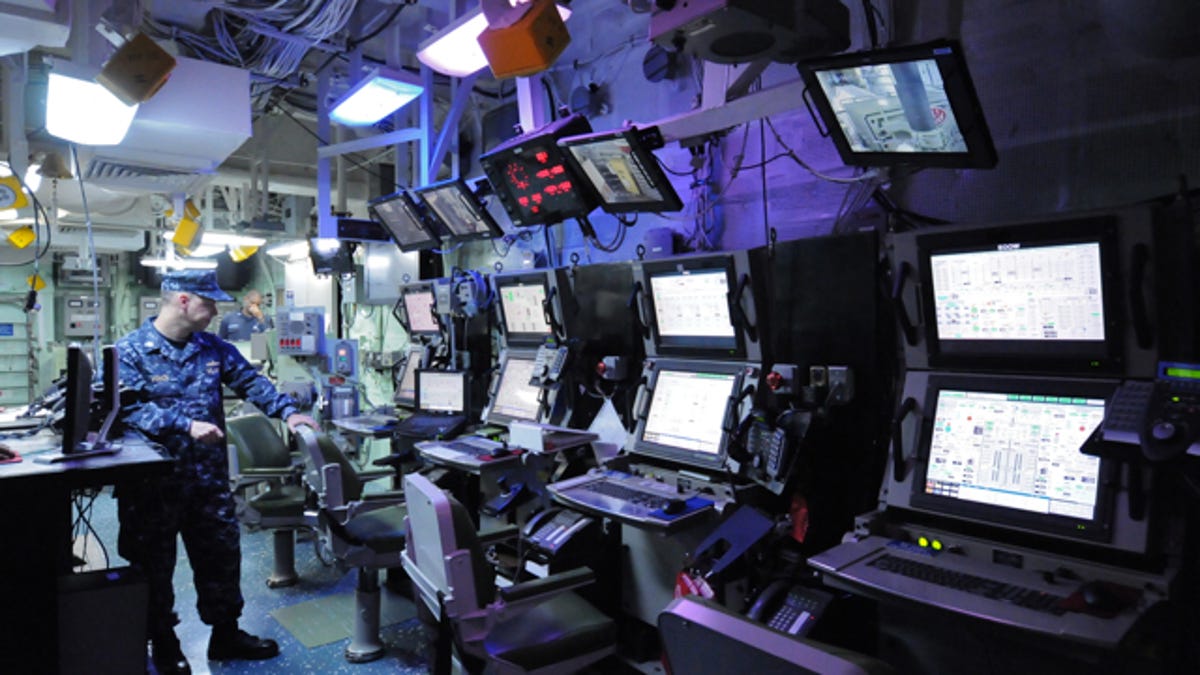Navy's new ship sails the seas on half the gas
The USS Makin Island, the Navy's newest amphibious assault ship, saves millions of dollars by using far less fuel than its sister ships. CNET's Daniel Terdiman hitches a ride as part of his Road Trip 2012.

SAN DIEGO -- The U.S. Navy spends a fortune every year on energy, so for a ship to complete a deployment having burned through just half the cash it had available for fuel is a very good sign of things to come.
For some time, the Navy has been saying many of the right things about its plans to go green, starting with a major biofuels initiative. And though a recent Wired report claims that the servicewide efforts have lost steam, the performance of the USS Makin Island could well be a bright spot.
As part of Road Trip 2012, I've come to the Naval Base San Diego for a firsthand look at the Navy's most advanced amphibious assault ship ever, and one of the first things I was told is how the Makin Island -- which just completed its first-ever deployment -- spent only $15 million of the $33 million it was given for fuel during the deployment. (The trip was a 7-month journey across the world, carrying about 1,200 Marines and 1,000 Navy sailors, as well as 29 helicopters and 6 Harrier airplanes.)
That $15 million figure is thanks to the ship's electric drive, known as the auxiliary propulsion motor (APM), a very-low emissions system designed to let the Makin Island run at up to 12 knots -- about 13.8 miles an hour -- without using any fuel except a small amount to power its generators, according to Lt. Commander Brian Ponce, the ship's main propulsion assistant.
Most Navy amphibious assault ships are powered by steam, which can take up to three days to get up and running, Ponce explained. By comparison, the Makin Island can be on the move within 60 seconds thanks to its electric drive. And though its two gas turbine engines can move the Makin Island at twice the speed of the electric drive, in an emergency, the ship can get going pronto if it has to.
According to Ponce, the Makin Island's two propulsion systems can both be operated from 32 workstations scattered throughout the ship. That redundant system is meant to give engineers the ability to get the ship going even if one area has been damaged, he said.
Perhaps more importantly, by burning through about half the fuel that a steam-powered amphibious assault ship uses, the Makin Island has the ability to "stay on station," or in the middle of action, for about twice as long as its sister ships, Ponce explained.
And because the APM offers a high level of automation, Ponce said, it allows the Navy to staff the Makin Island's engineering control center with only 11 people, just over half what the service's steam-powered amphibious assault ships require, he said.
Clean water
The electric drive isn't the only green system aboard the Makin Island. Another is a reverse osmosis setup used to help efficiently convert 200,000 gallons of seawater into potable water each day.
According to Ponce, the system works by taking pumped-in seawater and slowly passing it through a series of membrane elements. As the water is forced through the membranes, salt is left behind, and by the time the water has made it completely through, all that's left is distilled water.
At that point, the distilled water is put through another system, called miox, that kills all contaminants by barraging them with salt pellets that have been electrically energized. Afterward, the remains of the salt pellets can be safely put overboard, Ponce explained, and the system does away with the use of chemicals like bromine and chlorine.
The upshot of this is that the Makin Island can allow its hundreds of Marines and Navy sailors to use quite a bit more fresh water than their counterparts on other vessels, even taking daily "Hollywood showers," or the kinds of long showers most of us consider normal.



